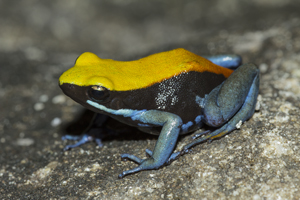Continuing the legacy of impacting research, two DICE PhD students have recently published papers studying Chytrid Fungus and its prevalence in amphibians in the biodiversity hotspot of islands off the southeast coast of Africa; with different outcomes, for now.
Amphibian chytridiomycosis is an emerging infectious disease caused by the chytrid fungus Batrachochytrium dendrobatidis (Bd). First identified in the 1990s Bd has been detected in over 600 species worldwide, at least 200 of which have declined as a result of infection.
Gonçalo M. Rosa published a paper in Scientific Reports, “Widespread presence of the pathogenic fungus Batrachochytrium dendrobatidis in wild amphibian communities in Madagascar” in February 2015. Gonçalo’s paper reports his research which indicates that for the first time Bd has been detected and reported in amphibians within Madagascar. With more than 290 described species and over 200 undescribed species of amphibian, the presence of Bd poses a considerable threat to Madagascar’s ‘megadiverse amphibians’. Gonçalo’s research was reported by the BBC.
Jim Labisko has recently published his paper “Chytrid fungus (Batrachochytrium dendrobatidis) undetected in the two Orders of Seychelles amphibians” in Herpetological Review. Jim’s research focusses on the Seychelles Archipelago which, like Madagascar, harbours a very high proportion of endemic frogs but is also home to less well-known caecilians. The paper confirms that, as yet, the Chytrid Fungus has not been detected in Seychelles amphibians.
The Durrell Institute of Conservation and Ecology is part of the School of Anthropology and Conservation at the University of Kent. Gonçalo and Jim are both studying for a PhD in Biodiversity Management. Gonçalo is also working for the Zoological Society of London. Jim also does odd-jobs, and will dance for food.

Sooglossus sechellensis
Image by Jim Labisko

